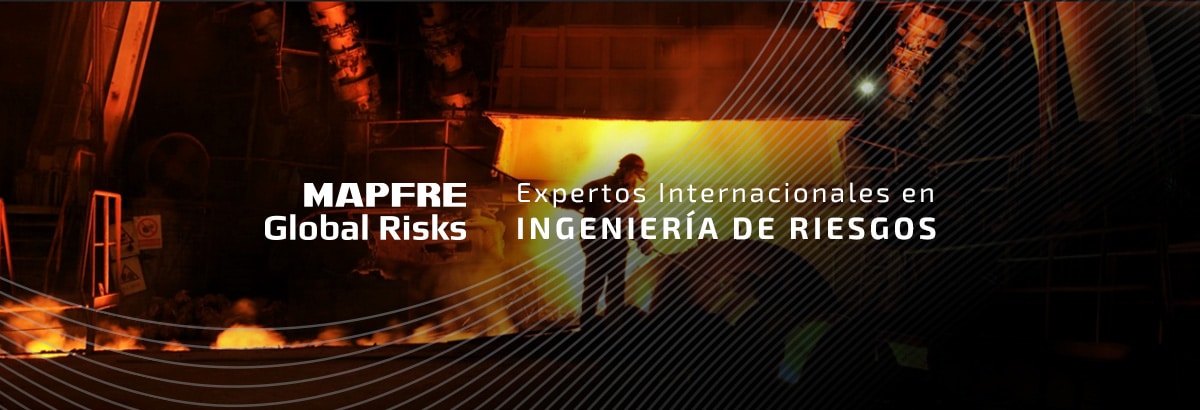Gonzalo Sanz Segovia | 23/09/2025
This article explores how decarbonization and the use of green hydrogen can transform the steel industry, the associated benefits and challenges, and risk management in its implementation.
The steel industry is one of the main contributors to global carbon dioxide (CO₂) emissions, contributing approximately 8% of total greenhouse gas emissions. This sector is vital to the global economy, as steel is an essential material in construction, infrastructure, transportation, and manufacturing. However, the reliance on coal as an energy source and as a reducing agent in steel production processes poses significant challenges in the context of the fight against climate change.
Decarbonizing the steel industry is a priority for meeting global climate goals, such as those set out in the 2015 Paris Agreement. Within this framework, green hydrogen is presented as a promising solution, offering a clean and sustainable alternative to replace fossil fuels in steel production.
The steel industry and its environmental challenges
The steel industry faces several challenges in its transition to sustainability. On the one hand, demand for steel continues to grow due to global development, making immediate emissions reductions difficult. On the other hand, dependence on mature technologies and existing infrastructure limit the adoption of clean alternatives. However, pressure to decarbonize the sector is growing, driven by government regulations, consumer expectations, and corporate commitments to sustainability.
Traditional steel production relies on carbon-intensive processes, such as blast furnaces that use coking coal to reduce iron ore and convert it into steel. This method generates large amounts of CO₂, making it one of the most polluting processes in the industry.
electric arc furnace (EAF) steelmaking process has a lower environmental impact: the process primarily uses recycled scrap, which reduces CO2 emissions . CO2 emissions per ton of steel produced are 0.4 tons. In contrast, the blast furnace production process is estimated to emit around 1.8 tons of CO2 per ton of steel produced.
Decarbonization: concept and strategies
Decarbonization involves the progressive reduction of CO₂ emissions in industrial processes, replacing fossil fuels with renewable energy sources and clean technologies. In the steel industry, decarbonization strategies include:
- Energy efficiency: Improve processes to consume less energy per ton of steel produced.
- Carbon capture and storage (CCS): Capturing CO₂ generated in processes and storing it in safe geological formations.
- Circular economy: Steel scrap is infinitely recyclable without loss of quality, making it an ideal material for a circular economy.
- Replacing fossil fuels: Adopting technologies that use renewable electricity or alternatives such as green hydrogen.
In addition to boosting steel production from recycled scrap using electric furnaces, driven by the need to reduce CO₂ emissions, another solution involves replacing fossil fuels with hydrogen in the direct reduction of iron ore (DRI). This method converts iron ore into metallic iron without the need for blast furnaces, releasing water vapor instead of CO₂.
Unlike grey hydrogen ( traditional production by reforming natural gas) or blue hydrogen (which includes carbon capture), green hydrogen does not generate emissions in its production: green hydrogen is produced through the electrolysis of water, using electricity from renewable sources such as solar or wind.
The transition from blast furnaces to technologies such as direct reduction furnaces (DRI) and electric furnaces (EAF) represents a step toward more sustainable steel production. However, this transformation entails a heavy dependence on the currently high price of electricity, which hinders the widespread adoption of these processes.
A prominent example of the use of green hydrogen in steel production is the Hybrit project in Sweden, which has successfully reduced CO2 emissions by 90% compared to the traditional process. In addition to Sweden, other countries such as Germany and Japan are also developing similar initiatives to integrate green hydrogen into their steelmaking processes.
The steel industry is also rapidly moving toward adapting furnaces traditionally fueled by natural gas to operate with hydrogen, as part of the energy transition and decarbonization of the sector. Implementing hydrogen burners in reheating furnaces has improved energy efficiency and significantly reduced emissions.
Risk management arising from the use of hydrogen in the steel industry
While it is true that in other industries such as Oil & Gas, the use of hydrogen in the process has been widely established for many years, its implementation in the steel industry entails an additional risk that must be properly managed.
The main risks derived from the use of hydrogen These include fire, explosion, and asphyxiation, caused by the physical properties (high flammability and low ignition energy). Particular attention must be paid to the risks associated with leaks, accumulation in confined spaces, and reactivity with other materials. Therefore, it is crucial to consider the risks associated with high-pressure storage, detection, and material compatibility, since:
- Hydrogen is highly flammable and can form explosive mixtures with air.
- Advanced storage and transportation systems need to be developed to minimize the risk of leaks.
- Hydrogen is colorless and odorless, making it difficult to detect and potentially going unnoticed until it accumulates in dangerous quantities.
- The integration of hydrogen into steelmaking processes requires significant technical adjustments to existing plants.
- It requires staff training to handle this new fuel safely and efficiently.
- Hydrogen can cause embrittlement in certain metals , affecting the structural integrity of equipment and piping.
Risk management in the hydrogen industry involves a combination of technical measures, operating procedures, and personnel training to ensure safe operations and the protection of workers and the environment:
- Early leak detection using sensitive and reliable detection systems.
- Adequate ventilation in areas where hydrogen is handled to prevent dangerous accumulations.
- Eliminate or minimize ignition sources , such as sparks, flames, and heat.
- Install emergency shut-off systems to quickly interrupt the flow of hydrogen in the event of a leak or emergency.
- Staff training and education on hydrogen hazards and safety procedures.
- Design and maintenance of facilities with intrinsic safety features, such as the proper selection of materials and the implementation of ventilation and containment systems.
- Periodic risk assessment to identify and mitigate potential hazards.
Benefits and challenges: future prospects
Green hydrogen has multiple advantages:
- Sustainability: Its production and use do not generate carbon emissions.
- Versatility: It can be used in industrial processes, transportation and energy storage.
- Availability: It takes advantage of renewable resources, making it potentially unlimited.
Despite the opportunities offered by green hydrogen, its adoption faces several challenges:
- High production costs due to renewable energy infrastructure and electrolysis technology. The high cost of green hydrogen compared to gray hydrogen, blue hydrogen, or coal is currently the main barrier to its large-scale implementation. Currently, gray hydrogen is considerably cheaper than green hydrogen, with costs around €1-2/kg, compared to €4-8/kg for green hydrogen.
- The infrastructure required for its production, transportation, and storage is still under development. Significant investments are required to expand distribution networks, increase renewable energy generation capacity (solar and wind), and build electrolysis plants.
- Risk management, infrastructure development, and financial incentives to encourage investment in green hydrogen are other key factors to ensure a successful transition.
However, the outlook is promising. Advances in electrolysis technologies and falling renewable energy costs are making green hydrogen increasingly competitive. Furthermore, government policies and environmental regulations are incentivizing its use in industrial sectors. Gray hydrogen is currently cheaper, but green hydrogen is expected to become the most profitable option in the long term due to falling technology costs, the promotion of clean energy, and economies of scale.
Author of the text:

Risk Engineer at MAPFRE Global Risks





